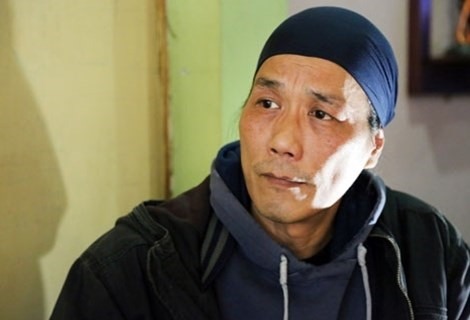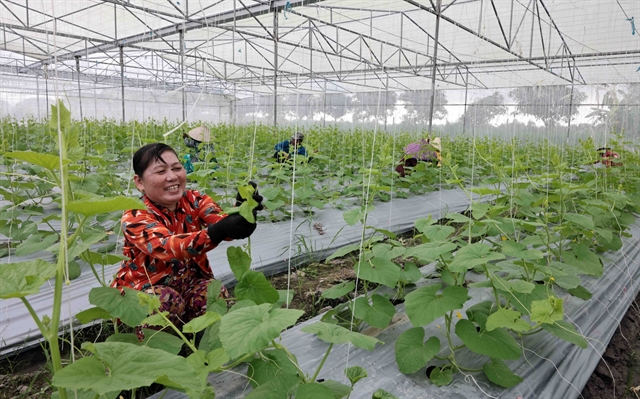 Life & Style
Life & Style

Folk music researcher Bùi Trọng Hiền recently completed a groundbreaking report the revitalising of hát cửa đình (singing at the village’s communal house). It is the oldest form of ca trù singing, which has been recognised by UNESCO as an intangible cultural heritage in need of urgent safeguarding since 2009.
 |
Folk music researcher Bùi Trọng Hiền recently completed a report on the revitalisation of hát cửa đình (singing at the village’s communal house). It is the oldest form of ca trù singing, which has been recognised by UNESCO as an intangible cultural heritage in need of urgent safeguarding since 2009.
Hiền’s work is the first research on hát cửa đình to systematise a theory of the art form. He was supported by Nguyễn Phú Đẹ, Nguyễn Thị Chúc and Phó Thị Kim Đức, the last remaining ca trù master singers and musicians [practitioners recognised by the State for their accomplishments and efforts to maintain and pass on the art form to the younger generation]. His research is a milestone for the preservation and development of ca trù. He hopes young singers who learn from senior performers by oral and technical transmission will study his research on hát cửa đình theory.
Researcher Hiền has gained renown in his field for his research on the Central Highlands’ gong cultural space, now recognised by UNESCO as an intangible and oral masterpiece of human culture.
Hiền spoke about his research.
Why did you want to carry out the project to develop a systematic theory of hát cửa đình?
I am glad because my research is recognised by my colleagues who are veteran music researchers. This is the first time hát cửa đình has been systematised and specific regulations have been developed, which will help students of ca trù learn the form more easily.
I have been researching folk music for 20 years. I know about melody regulations of many traditional art genres such as chèo (popular theatre), tuồng (classical opera), quan họ (love duet singing), xẩm (blind buskers) and others. But I had previously only researched the history and the origins of ca trù.
I spend much time listening to records and tapes by the late master singers. Some of them are very old and damaged by time. It takes time to listen and rewrite sentences sung by the late artists. If I don’t do this, however, the records and tapes will be spoilt.
Many ca trù clubs have been revitalised in Hà Nội, allowing young singers to emerge and carry on the art form. What makes you think that ca trù is fading away?
That is a good point. I think we need to encourage young singers to engage in traditional music and ca trù in particular. However, I think I have to take responsibility for ca trù.
In 2014, I was invited to be a member of the jury members at the National Ca Trù Festival. The panel included artisan Nguyễn Phú Đẹ, who is the last remaining well-known ca trù musician of the 20th century. He used to perform ca trù at the two spaces of the cửa đình (communal house) and the ca quán (singing bar).
We saw hát cửa đình repertoire on the stage, which the singer performed with a paper fan. Only master musician Đẹ knew that it was wrong and he gave an analysis of its departure from the traditional form. I recognised the important role of the senior performer like musician Đẹ.
After the festival, I came home and talked with my wife and decided to stop all my work. I went to the northern province of Hải Dương to live with musician Đẹ, learning all things about ca trù. During this time, I became obsessed with finding material sources to support my research. I aimed to finish my research as soon as possible because of Đẹ’s old age. When I completed my basic research in early 2016, the artist suffered a stroke.
How did you begin to systematise a theory of hát cửa đình theory?
My work was delayed until the end of 2016. Associate Professor Doctor Từ Thị Loan, acting director of the Việt Nam National Institute of Culture and Arts Studies, considered my research important. She asked me to set up a project on ca trù preservation in Hà Nội. I decided to train ca trù singers with a new method.
Beginning in February 2017 the singers from Phú Thị Ca Trù Club studied theory to learn the basics. In the past, ca trù singers passed on the music and poems that comprise ca trù pieces orally, usually within their family. Ca trù has fifty-six different musical forms or melodies and each of the singers names the melodies differently.
This makes the young learners confused. My research is to review the development of ca trù and provide a general conception about ca trù.
Are you ready to defend your work against opponents?
Yes, I’m ready to answer any questions. My work is based on scientific research including field trips and meetings with ca trù artisans. One of the most important things is to rewrite the sung sentences and words from old records and tapes by the late artisans.
Frankly, I feel like a child learning the alphabet when I’m researching ca trù. At present, there are many young singers learning to sing ca trù. But I see they don’t have basic knowledge of ca trù. I hope young ca trù singers will spend time studying ca trù. — VNS



.jpg)
